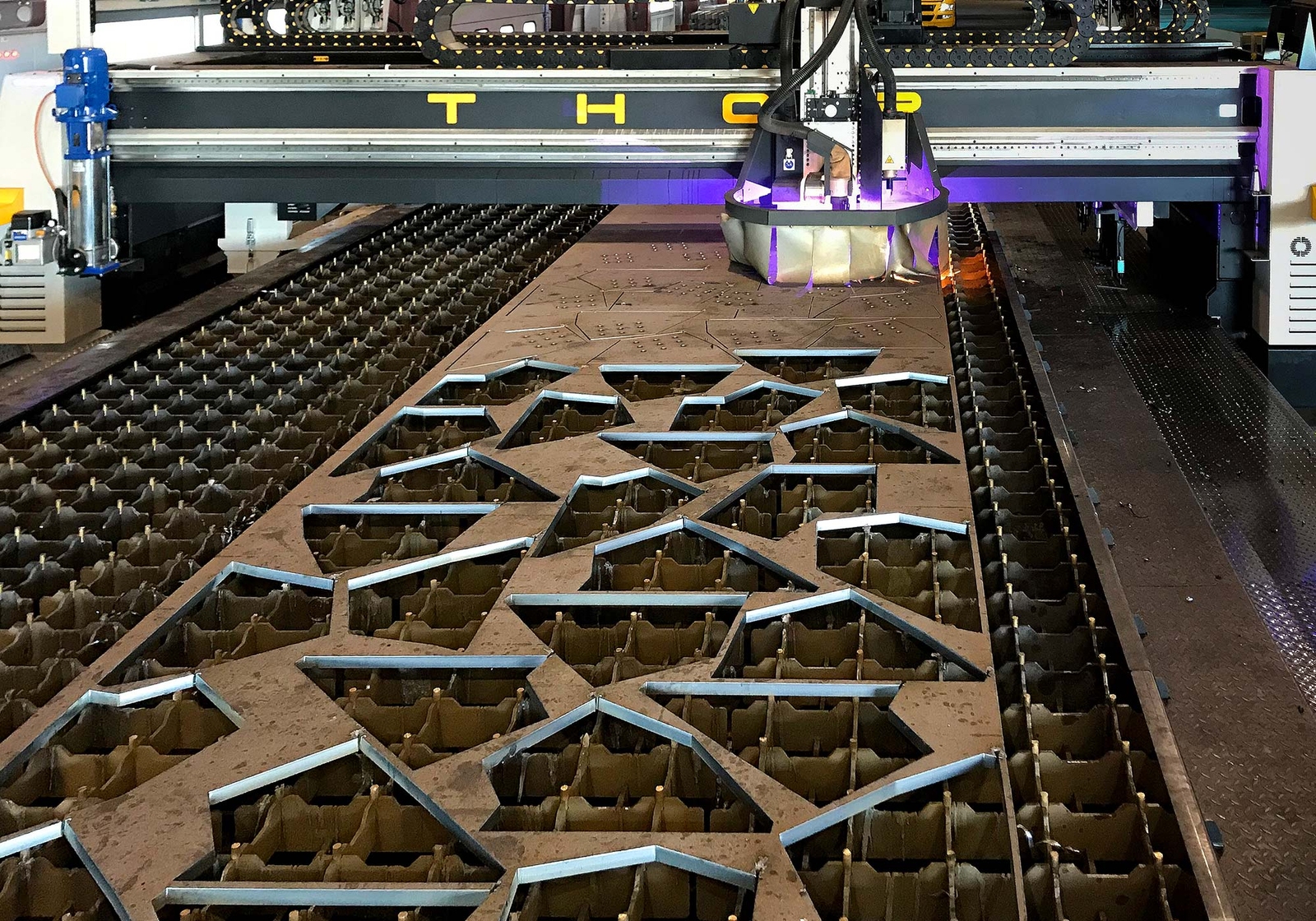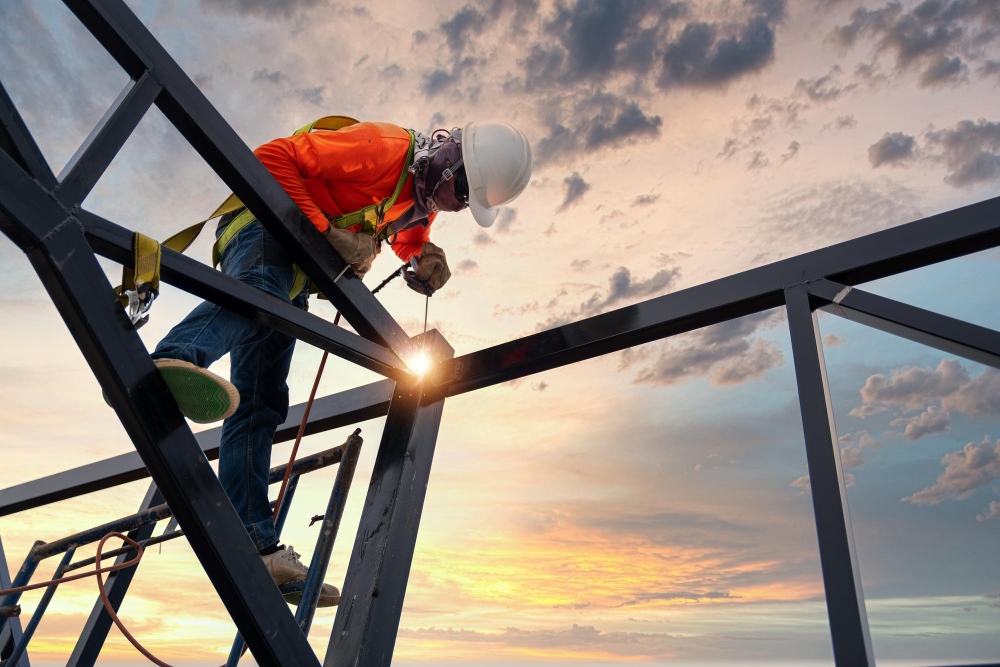The Ultimate Handbook on Custom-made Steel Manufacture Solutions for Structural Projects
In the world of structural jobs, the significance of personalized steel fabrication solutions can not be overemphasized. From the fundamental understanding of steel construction fundamentals to the detailed procedure of choosing the most ideal products, every action in this trip plays an essential duty in the ultimate success of a job.
Understanding Customized Steel Manufacture Basics
Exploring the principles of custom-made steel fabrication gives insight into the elaborate procedure of transforming raw steel right into customized architectural components. Personalized steel manufacture is a specific production strategy that entails cutting, shaping, and assembling steel materials to develop distinct structures according to specific project demands. Recognizing the essentials of custom steel fabrication is vital for ensuring the successful execution of structural jobs.
The procedure generally begins with the assessment of task specifications and layout needs. This preliminary phase involves comprehensive planning and collaboration between developers, engineers, and fabricators to establish the most ideal strategy for making the steel parts. Accuracy is key throughout the construction process, as also small deviations can impact the structural stability of the final item.
Numerous methods, such as cutting, welding, and shaping, are utilized to change raw steel right into the desired architectural aspects. Skilled fabricators use advanced equipment and devices to make certain precision and uniformity throughout the manufacture procedure. Quality control steps are applied to validate the integrity of the fabricated elements before they are assembled on-site, guaranteeing compliance with market criteria and project specifications.
Selecting the Right Steel Materials

Firstly, the type of structural task and its details needs play a vital duty in figuring out one of the most ideal steel products. Factors such as the load-bearing capability, ecological problems, and wanted life-span of the framework will dictate the grade and kind of steel that ought to be made use of.
Moreover, the physical properties of the steel, including weldability, ductility, and stamina, need to line up with the project's demands to assure ideal performance and longevity (steel fabrication melbourne). Additionally, factors to consider such as deterioration resistance, cost-effectiveness, and accessibility of the steel products must likewise be thought about during the option process
Layout Considerations for Structural Projects
Structural jobs require precise focus to design considerations to ensure both performance and security are prioritized throughout the building process. When it comes to designing structural tasks, several vital factors should be taken into consideration to assure the success of the venture. The structural stability of the structure need to be a leading priority. This entails evaluating lots, anxieties, and environmental variables to identify the most suitable layout that can endure different conditions over time. Furthermore, factors to consider for the performance of the structure play a vital role in the style process. Comprehending the objective of the structure and exactly how it will certainly be used helps in producing a layout that makes the most of performance and use. Incorporating aspects that boost the aesthetic appeals of the framework can better raise the total layout. Balancing published here looks, functionality, and safety and security is crucial in developing effective structural projects that fulfill both useful and visual requirements. By thoroughly taking into consideration these facets during the design phase, architects and engineers can make certain the structural job's success from perception to conclusion.
Streamlining Construction Processes for Efficiency

Furthermore, applying lean production principles can considerably improve efficiency in steel construction. By reducing waste, maximizing operations, and enhancing communication in between different groups involved in the manufacture procedure, jobs can be completed much more swiftly and with better criteria.
Moreover, establishing a well-organized manufacturing routine and process can assist in focusing on tasks, appointing sources efficiently, navigate to this site and meeting task deadlines without delay. By having a clear strategy in position and on a regular basis keeping track of progression, any kind of potential traffic jams or hold-ups can be determined and attended to without delay, making sure effective and smooth construction procedures for architectural projects.
Quality Assurance and Job Administration in Steel Fabrication
To make sure the effective execution of steel construction jobs, meticulous quality assurance measures and reliable project administration methods are essential elements in keeping precision and meeting customer assumptions. Quality assurance in steel construction entails extensive examinations at various stages of the manufacture process to validate compliance with job specs and sector requirements. This consists of product testing, dimensional checks, and weld inspections to guarantee architectural honesty and safety and security.
Task administration plays an important duty in working with the different aspects of steel manufacture tasks, such as scheduling, source allocation, and interaction amongst group members. A well-defined job plan with clear goals, milestones, and timelines assists to check development and deal with any type of prospective concerns proactively. Effective interaction in between all stakeholders, consisting of customers, fabricators, engineers, and professionals, is important for making sure that the project progresses smoothly and satisfies the desired high quality standards.
Final Thought
Finally, custom-made steel fabrication plays an important function in architectural jobs by providing tailored remedies utilizing the appropriate products and layout factors to consider. Performance in manufacture procedures, quality assurance, and efficient project monitoring are necessary for successful results. By understanding the fundamentals of personalized steel fabrication and applying structured processes, project teams can supply top notch and durable frameworks that fulfill the specific needs of their customers.
Personalized steel manufacture is Continue a specific manufacturing strategy that entails cutting, shaping, and assembling steel materials to create special structures according to details project demands.To make certain the successful execution of steel construction projects, thorough top quality control procedures and effective job monitoring methods are crucial elements in keeping precision and conference client assumptions. Quality control in steel construction includes strenuous inspections at different stages of the manufacture procedure to validate compliance with project specs and sector standards (Alpha reo).Task administration plays a vital role in working with the various aspects of steel manufacture tasks, such as scheduling, resource appropriation, and interaction amongst team participants.In verdict, custom-made steel construction plays a vital duty in architectural projects by offering customized solutions making use of the appropriate products and style factors to consider